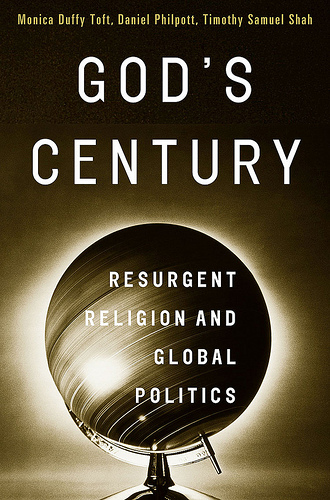Meet the Authors
 Monica Duffy Toft has taught at Harvard since 2004. Currently she serves as Associate Professor of Public Policy at the John F. Kennedy School of Government and as Director of the Initiative on Religion in International Affairs. Her research interests include international relations, religion, nationalism and ethnic conflict, civil and interstate wars, the relationship between demography and national security, and military and strategic planning. For more information visit her faculty page or read her vitae.
Monica Duffy Toft has taught at Harvard since 2004. Currently she serves as Associate Professor of Public Policy at the John F. Kennedy School of Government and as Director of the Initiative on Religion in International Affairs. Her research interests include international relations, religion, nationalism and ethnic conflict, civil and interstate wars, the relationship between demography and national security, and military and strategic planning. For more information visit her faculty page or read her vitae.
Daniel Philpott has taught at Notre Dame since 2001. Currently he serves as an Associate Professor of Political Science (Department of Political Science) and Peace Studies (Kroc Institute for International Peace Studies). His research focuses on reconciliation in politics . For more information visit his faculty page or read his vitae.
Timothy Samuel Shah served in senior research positions with several institutes and think tanks, including the Pew Forum on Religion & Public Life. Since 2010 he has been affiliated with Georgetown University. Current he serves as Associate Director of the Religious Freedom Project at the Berkley Center For Religion, Peace, and World Affairs and Visiting Assistant Professor in the Government Department. He is a political scientist specializing in the relationship between religion and political freedom in theory, history, and contemporary practice.
Book Basics
The secularization thesis has proven false. Rather than declining, the number of people adhering to the major world religions has increased significantly in recent years. Since 1967 religion’s influence on politics has grown on every continent. Written by three highly regarded political scientists, God’s Century: Resurgent Religion and Global Politics offers a thorough historical analysis of this global transformation and explores the implications of this trend for politics in the coming years while making a compelling case that the 21st century will be God’s century. Religious leaders will benefit from the analysis of how religions became politically assertive in light of their knowledge of these shifts within their respective faith tradition, from an enriched understanding of the various possible options for relationships between religious and political authority and the relative strengths and weaknesses of each, and from the many examples of religious political influence .
In the final chapter (p. 207-223), the authors offer “Ten Rules for Surviving God’s Century”
- Acknowledge that religious actors are here to stay.
- Do not assume that the activism of religious actors can or should be confined to a “private sphere.”
- Learn to live with the fact that the issue is not whether, but when and how, religious actors will enter public life and shape political outcomes.
- Do not exaggerate the power of religious actors in public life, thereby replacing secularism with sacralization . . .
- . . . but expect religious actors to play a larger and more pervasive role than conventional wisdom anticipates.
- Accept that the more governments try to repress or exclude religion from public life, the more such efforts will be self-defeating.
- Acknowledge that the more governments permit religious actors to be autonomous social actors in a system of consensual independence, the more religion will serve as a “force multiplier” for important social and political goods, including democratization, peacemaking, and reconciliation.
- Take the religious beliefs and political theologies of religious actors seriously because they interact with political structure and context to explain much of the political behavior of religious actors.
- Accept that if governments fail to respect the institutional independence of religious actors, especially through systematic repression, the more these governments will encourage pathological forms of religious politics, including religion-based terrorism and religion-related civil wars.
- Appreciate that there is strategic value in pursuing a religious freedom in the conduct of foreign policy.
So What?
Many people of faith are unaware of the four decade old trend toward an increased role for religion in politics in America and globally.
- The authors assert that from 1789 to 1967 “political secularism put religious actors and ideologies on the defensive in much of the world,” but that from 1967 till present the trend reversed as “politically engaged religious actors of all kinds, in every part of the world” have put “secular regimes and ideologies on the defensive” (p.79). How have you noted the increased role of religion in all things political in the United States over the last forty years?
- Have you observed a similar shift within your denomination? At the denominational level what does this engagement look like in 2011?
- Do you think the “Ten Rules for Surviving God’s Century” offer an adequate framework for the interplay between religion and politics for the remainder of this century? Why or why not?
Monica Duffy Toft, Daniel Philpott, and Timothy Samuel Shah. God’s Century: Resurgent Religion and Global Politics. W. W. Norton & Company, 2011. ISBN: 9780393069266.